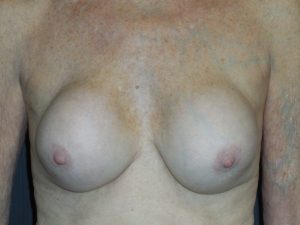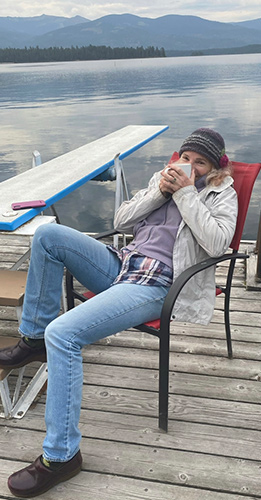Capsular Contracture 101
Anyone who knows my practice well knows that I am not a big fan of breast implants. I much prefer fat transfer and/or breast lift to get a breast looking nicer. But sometimes only a breast implant will get the patient the size and shape of breasts they desire. Implants have many issues including malposition (too high, too low, too whatever), size problems (too big or too small), leaking or rupture problems. Those issues can usually be address with revision surgery. There is one issue that has tortured plastic surgeons and their patients from day one of breast implants decades ago. That problem is capsular contracture.
All implants develop a capsule. Actually it is the body that develops the capsule. This is normal reaction to a foreign body and, yes, breast implants are a foreign body, a large foreign body. A capsule only becomes a problem when it become thick and/or tight. As the capsule thickens or tightens, it puts pressure on the breast implant and turns any shape or profile of implant into a sphere because a sphere is the shape that supports the largest volume in the smallest surface area, or something like that. Geometry was a while ago for me! Thus most badly encapsulated implant all look sort of the same – like a ball. And they all feel hard, sometime really hard and often they are very uncomfortable. Capsules can even become calcified in which case the implanted breasts are literally rock hard.
So what causes capsular contracture? Good question and I hope the smart researcher who breaks the code wins the Nobel Prize in medicine some day. A lot of progress has been made, especially in the past 10 years or so and it sure seems like inflammation is the common pathway to capsular contracture. The most common causes of inflammation around the implant and resultant capsular contracture are 1. bleeding in the implant pocket, 2. subclinical infection and biofilm in the implant pocket, 3. leakage or rupture of silicone gel implants. Let’s look at these a little closer.
Bleeding in the implant pocket has been known to result in capsular contracture for decades. Plastic surgeons take a lot of care to really “dry up” the implant pocket prior to inserting an implant. This is usually done with an electrocautery device call a Bovie. This little gizmo allows the surgeon to zap little oozing vessels and help prevent any significant blood from accumulating around the implant. Also, in the rare incidence of post operative bleeding around an implant, surgeons are very quick to take a patient back to the OR to “wash out” the pocket, find and treat the bleeding and reinsert the breast implant. Sometimes a very minor bleeds can avoid a trip back to the or but in cases like these, the surgeon is on high alert for capsular contracture.
Subclinical infection and biofilm have been on our radar screen for 10 years or so. Biofilm (which deserves it’s own blog post) is a slimy substance that is produced by certain types of bacteria. It serves as a protective hiding place for bacteria and is resistant to antibiotics. The most common example of biofilm is dental plaque. Yuck. Anyway, once the biofilm issue became well known, much more attention was paid to reducing the exposure of implants to bacteria. We are now compulsive about washing out the implant pocket with antibiotic solution, using a no touch technique with a Keller funnel when inserting the implant, changing gloves prior to touching an implant and such. Remember the billionaire Howard Hughes and his OCD about germs? Well, we really go totally Howard Hughes with implant surgery! Also, the location of incision has been shown to have an effect on the rate of capsular contracture. Incisions around the nipple, through the arm pit or belly button have the highest rates of capsular contracture. Incisions under the breast (the inframammary fold) have the lowest rate. This is very likely due to a lower level of bacteria in the area of the inframammary fold as opposed to the other areas. I use the inframammary fold incision almost exclusively for this reason and also because it allows me to see the pocket really well.
Leakage or rupture of gel implants results the in silicone gel coming into contact with the capsule and this often seems to cause inflammation and hardening or tightening of the implant capsule. When I am going after a particularly nasty capsule, I expect to see an leaking or ruptured implant and I am usually not disappointed. The advances made in implant construction – thicker implant shells and more cohesive gel – will hopefully decrease this cause of capsular contracture.
So that is Capsular Contracture 101. Next up will be a blog about what can be done for capsular contracture. Stay tuned and thanks for reading. And I would be honored if you followed me Instagram @sowdermd and @breastimplantsanity. Dr. Lisa Lynn Sowder




 @lisalynnsowder
@lisalynnsowder
